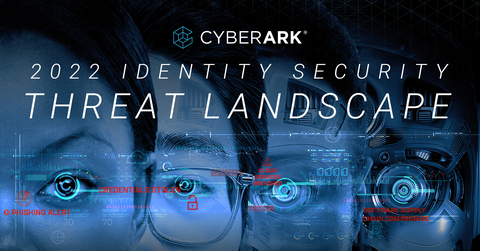CyberArk Report: Massive Growth of Digital Identities Is Driving Rise in Cybersecurity Debt
A recent report by CyberArk reveals alarming trends in cybersecurity practices among organizations. It highlights that 79% of security professionals prioritized business operations over cybersecurity in the last year. The report indicates a significant increase in machine identities, outpacing human identities by 45x, which raises concerns about cybersecurity risks. Additionally, 64% of leaders express inability to prevent supply chain attacks, with 88% of energy companies experiencing such breaches. The findings underscore the urgent need for better identity security controls and proactive measures against cyber threats.
- Demand for cybersecurity solutions is increasing due to rising cyber threats.
- CyberArk is positioned as a leader in the identity security market.
- 79% of organizations prioritize business operations over cybersecurity.
- 64% cannot stop supply chain-related attacks, indicating inadequate cybersecurity measures.
- Less than 50% have identity security controls for business-critical applications.
- Seventy-nine percent of security professionals agree that their organization prioritized maintaining business operations over ensuring robust cybersecurity in the last 12 months
- Machine identities now outweigh human identities by a factor of 45x
- Sixty-four percent of security leaders admit their organization cannot stop a supply chain-related attack
- Eighty-eight percent of energy and utilities companies have been hit with a successful software supply chain-related attack

Unmanaged and unsecured digital identities are driving rise in cybersecurity debt. (Graphic: Business Wire)
A Growing Identities Problem
Every major IT or digital initiative results in increasing interactions between people, applications and processes, creating large numbers of digital identities. If these digital identities go unmanaged and unsecured, they can represent significant cybersecurity risk:
- Sixty-eight percent of non-humans or bots have access to sensitive data and assets.
- The average staff member has greater than 30 digital identities.1
- Machine identities now outweigh human identities by a factor of 45x on average.
-
Eighty-seven percent store secrets in multiple places across DevOps environments, while
80% say developers typically have more privileges than necessary for their roles.
The 2022 Attack Surface
Secular trends of digital transformation, cloud migration and attacker innovation are expanding the attack surface. The report delves into the prevalence and type of cyber threats facing security teams and areas where they see elevated risk:
-
Credential access was the number one area of risk for respondents (at
40% ), followed by defense evasion (31% ), execution (31% ), initial access (29% ) and privilege escalation (27% ).2 -
Over
70% of the organizations surveyed have experienced ransomware attacks in the past year: two each on average. -
Sixty-two percent have done nothing to secure their software supply chain post the SolarWinds attack and most (
64% ) admit a compromise of a software supplier would mean an attack on their organization could not be stopped.
Getting Into Cybersecurity Debt
Security professionals agree that recent organization-wide digital initiatives have come at a price. This price is Cybersecurity Debt: while security programs have expanded, they have not kept pace with organizations’ investments focused on driving business operations and growth. This debt has arisen through not properly managing and securing access to sensitive data and assets, and a lack of Identity Security controls is driving up risk and creating consequences. The debt is compounded by the recent rise in geopolitical tensions, which have reinforced the need for heightened awareness of the physical consequences of cyber attacks, especially on critical infrastructure:
- Seventy-nine percent agree that their organization prioritized maintaining business operations over ensuring robust cyber security in the last 12 months.
-
Less than half (
48% ) have Identity Security controls in place for their business-critical applications.
"Spending on digital transformation projects has skyrocketed in recent years to meet the demands of changed customer and workforce requirements,"
What Can Be Done?
-
Push for Transparency:
85% say that a Software Bill of Materials would reduce the risk of compromise stemming from the software supply chain. -
Introduce Strategies to Manage Sensitive Access: The top three measures that most CIOs and CISOs have introduced (or plan to introduce), each cited by
54% of respondents: real-time monitoring and analysis to audit all privileged session activity; least privilege security /Zero Trust principles on infrastructure that runs business-critical applications; and processes to isolate business-critical applications from internet-connected devices to restrict lateral movement. -
Prioritize Identity Security Controls to Enforce Zero Trust Principles: The top three strategic initiatives to reinforce
Zero Trust principles are: workload security; Identity Security tools; and data security.
About the Report
The
survey conducted by
Additional Assets:
- Report landing page: https://www.cyberark.com/ISTL22
- Blog: How Digital Identities Drive Cybersecurity Debt, the Hidden Transformation Trade-Off
1 - Respondents were asked to estimate the number of applications and accounts, on average, accessed per person in their organization and not managed by federated identities.
2 - Respondents were asked about the cyber attacker tactics and techniques (as laid out in the MITRE ATT&CK® Matrix for Enterprise covering cloud-based techniques) that represented the most risk to their organization.
Copyright © 2022
About
View source version on businesswire.com: https://www.businesswire.com/news/home/20220412005372/en/
Email: press@cyberark.com
Highwire PR
Email: cyberark@highwirepr.com
Investor Relations:
Email: ir@cyberark.com
Source:
FAQ
What does the CyberArk report reveal about cybersecurity priorities?
How do machine identities compare to human identities according to CyberArk?
What percentage of organizations experienced ransomware attacks?
What is 'Cybersecurity Debt' as mentioned in the CyberArk report?






